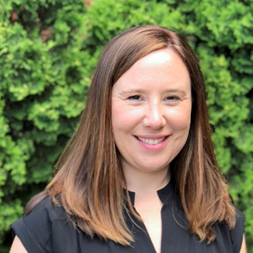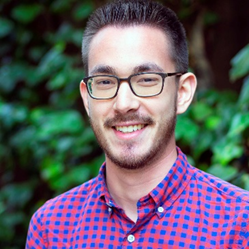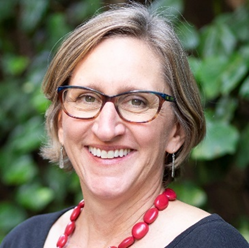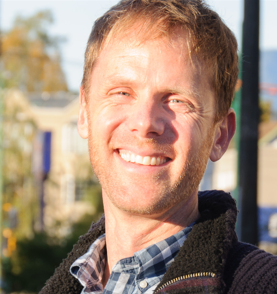Design Innovations in Active Transportation Live Online - Feb 2025
Feb 6, 2025 - Feb 6, 2025
Full course description
LIVE ONLINE
Time: 9 AM - 4 PM
This course will provide an in-depth examination of how active transportation design philosophies and design guidance resources are applied in the design of innovative active transportation facilities.
The instructors will begin with an overview of guidance resources, discuss how and when design resources should be used, clarify guidance vs. requirements, and highlight where there is flexibility for innovation.
A primary focus of the course will be the importance of context and user experience as the basis of low-stress, accessible, climate-response active transportation design. The class will explore how to scale treatments to context, funding, and site constraints to get active transportation projects built.
The course will include the examination of case studies and example projects, including key process elements such as the development of basis of design memoranda to document design decisions and build consensus. Instructors will also address high vs. low cost (quick-build or retrofit) treatments, consideration of the trade-offs, and how to select the appropriate treatment for a given project and context.
This course is designed as a 201-level course. Attendees will benefit most if they have a year or more of active transportation design experience. The UW Workforce Development Institute’s Introduction to Active Transportation online course will provide an 8-hour overview for individuals who are new to active transportation and may provide a useful primer for this course. See the WDI website to register for the Introduction to Active Transportation online course.
Outcomes
Participants will:
- Learn how designers draw on active transportation design philosophies and how they use guidance documents to inform the design process.
- Learn how context informs design, including urban vs. rural settings, new-build vs. retrofits, and how they address the user experience.
- Explore how planners and designers are creating better walking and bike facilities through proper facility selection, addressing level of stress, accessibility, and climate resilience.
- Investigate how designers navigate trade-offs by exploring through real world design examples.
Instructor Bios:
Amalia Leighton Cody, PE, AICP

Director of Engineering, Western U.S.
Toole Design
aleighton@tooledesign.com
Amalia is an engineer and planner with nearly two decades of experience on projects in the public realm. She is passionate about finding creative ways to plan and design sustainable transportation systems that support the economic, social, and environmental health of communities. Her expertise includes transportation projects, environmental programs and public policy, Complete Streets implementation, as well as drainage and utility design. A graduate of the University of Washington, Amalia is a licensed professional engineer in Washington and California, and a certified planner. She served on the City of Seattle's Planning Commission for 10 years from 2006 to 2016 and was Co-Chair from 2014 to 2016. She has also been involved with the Capitol Hill (Seattle) EcoDistrict Steering Committee, the American Planning Association, the American Public Works Association, and the Urban Land Institute.
Jakob Ward, PE

Project Engineer II
Toole Design
jward@tooledesign.com
Jakob is a Project Engineer and a graduate of the Civil Engineering Department at the University of Washington with over 9 years of experience in active transportation facility design. He has worked on active transportation projects across North America, with an emphasis on projects in Washington State. Jakob has led the development of projects in all stages of design, from alternatives analysis and concept development to final design and services during construction. Through this work, Jakob has accumulated extensive knowledge of bicycle and pedestrian design and best practices. Jakob also has expertise in active transportation design guidance, including work on developing national and regional design guidance documents, and has led active transportation trainings for engineering staff. Jakob enjoys delving into the details of design while keeping the big picture in mind to produce the highest-quality bicycle and pedestrian facilities that work for everyone.
Kristen Lohse, ASLA

Principal Urban Designer, Trails and Wayfinding
Toole Design
klohse@tooledesign.com
Kristen is a Principal Urban Designer with over two decades of experience in active transportation planning and design. She has worked on a wide variety of projects in the public realm and has developed expertise in shared use trails, Complete Streets guidance, wayfinding, and universal design. Her background in landscape architecture informs her work as designer and planner, giving her a unique breadth, perspective, and the ability to work at multiple scales and cross-cutting projects. Kristen combines a practical approach with an emphasis on user experience and placemaking to create vibrant and dynamic public spaces for walking, biking, and street life.
Dylan Passmore, MScPl, P.Eng.

Principal Engineer
Toole Design
dpassmore@tooledesign.com
Dylan is a Principal Engineer with experience in both the private and public sectors leading transportation projects across North America and Brazil. Dylan specializes in the engagement, analysis, design, and implementation of complex and sensitive multimodal corridor projects, particularly related to inclusive pedestrian and bicycle infrastructure design. Dylan has also led numerous research and engagement initiatives involved in advancing innovative transportation and streetscape design practices, as well as developing transportation policy and master plans. Dylan’s experience as Engineer of Record for several programs and signature corridor projects at the City of Vancouver means he is intimately familiar with navigating complex trade-offs in the public right-of-way.
For questions about this course please email wdi-help@uw.edu.

